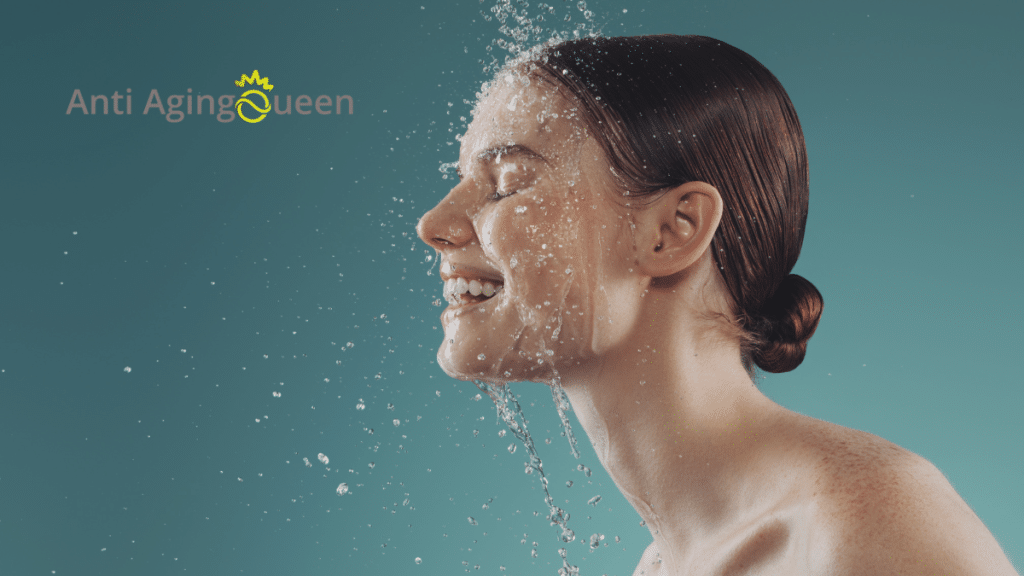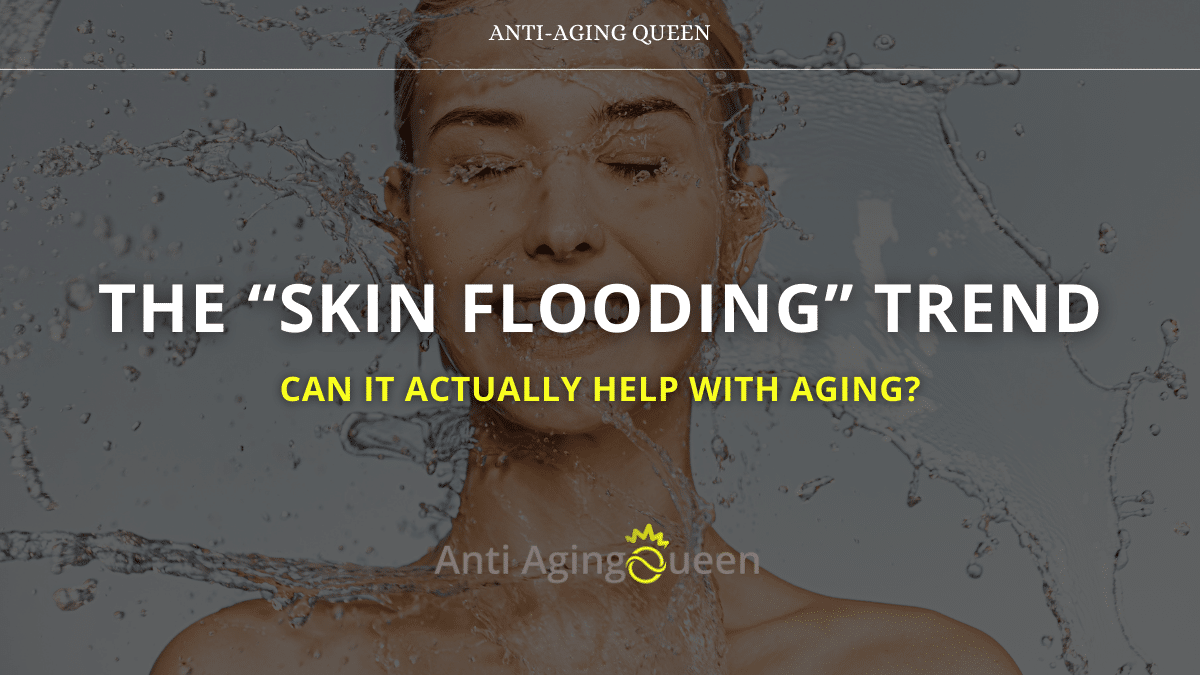Skincare TikTok has done it again—“skin flooding” is the latest trend making waves across feeds and vanities alike. The technique promises ultra-dewy, hydrated, youthful skin with minimal effort and maximum glow. But with all the hype, we’re left wondering: is skin flooding really the anti-aging secret it claims to be?
Let’s break down what skin flooding is, how it works, and whether it deserves a spot in your anti-aging routine.
💧 What Is Skin Flooding?

Skin flooding is all about layering hydrating products on damp skin in a specific order to “flood” your skin with moisture. Think of it as a hydration sandwich for your face. This technique aligns well with minimalist skincare approaches, which focus on maximizing efficacy with fewer products.
Here’s how the basic routine works:
- Start with a hydrating mist or damp face
- Apply a humectant serum like hyaluronic acid
- Seal it in with a moisturizer, preferably one that aligns with your skin’s specific needs, as outlined in our best night moisturizer guide
- (Optional) Top with a facial oil or occlusive balm to lock it all in
The idea? Keep the water content in your skin high enough to plump fine lines, calm irritation, and improve skin texture—all key in anti-aging skincare.
👵 Is Skin Flooding Anti-Aging?
Short answer: yes—indirectly, but powerfully.
Here’s how skin flooding supports youthful skin:
- Plumps fine lines with deep hydration
- Strengthens the skin barrier, which tends to weaken with age
- Improves elasticity and glow, making skin appear smoother and bouncier
- Enhances absorption of active ingredients like peptides and ceramides, which are crucial in formulations that include ceramides in skincare
But don’t expect miracles:
Skin flooding won’t erase wrinkles like retinol or firm like a microcurrent device—but it lays the perfect foundation for those products to work even better. For those just starting with anti-aging regimens, considering retinol in your 20s can provide a significant head start in maintaining youthful skin.
✅ Who Should Try It?
Skin flooding is especially helpful if you:
- Are 30+ and noticing dryness or dullness
- Use retinol and need to reduce irritation
- Want a glass-skin glow without heavy makeup
- Struggle with flaky skin in colder months
Best skin types for flooding:
✔️ Dry
✔️ Dehydrated
✔️ Mature
✔️ Sensitive (just watch the ingredients)
Oily or acne-prone? Use lightweight, non-comedogenic products and skip the heavy oils. Consider incorporating natural products good for skin to enhance your routine without exacerbating oiliness.
🧴 Best Products for Skin Flooding
Here’s what to use in each step:
- Hydrating mist or toner
- La Roche-Posay Thermal Spring Water
- Tower 28 SOS Daily Rescue Spray
- Humectant serum
- The Ordinary Hyaluronic Acid 2% + B5
- Naturium Snail Mucin Serum
- Moisturizer
- CeraVe Moisturizing Cream
- Neutrogena Hydro Boost Water Gel
- Optional occlusive layer
- Vaseline or Aquaphor (slugging)
- Squalane Oil (if you prefer plant-based)
For those interested in a more sustainable approach, exploring homemade skin care with natural ingredients can offer personalized solutions that align with the principles of skin flooding.
🧠 Pro Tips
- Always apply to damp—not wet—skin
- Use light layers to prevent pilling
- Introduce skin flooding 2–3 times a week, then build up
- For best results, combine with your favorite anti-aging actives like peptides or niacinamide, while keeping in mind the connection between nutrition and skin health
✨ Final Thoughts
Skin flooding may be trending, but it’s not just a viral gimmick. This hydration-first approach can seriously enhance your anti-aging results—especially when used alongside actives like retinol, vitamin C, and SPF. For a deeper understanding of effective skincare routines, consider exploring innovations in beginner-friendly skincare that can complement the skin flooding technique.
The takeaway? Don’t ditch your routine—just flood it.
✅ CTA
Want more skincare trends that actually work?
👉 Follow us on social media and check out our website for science-backed anti-aging tips, product recommendations, and the latest skincare obsessions.
❓FAQs
Q1: Can I combine skin flooding with retinol?
A: Yes! Flood first to hydrate, then wait 10–15 minutes before applying retinol. It helps reduce irritation and supports your skin barrier. Using the ultimate cream in skincare as part of this process can elevate your routine by providing additional protective benefits.
Q2: How often should I do skin flooding?
A: Start 2–3 times a week, then adjust based on your skin’s needs. Some people flood daily in dry weather.
Q3: Is skin flooding the same as slugging?
A: Not exactly. Slugging uses an occlusive (like Vaseline) as the final step to seal moisture, while flooding focuses on layering hydration first. You can combine both!


